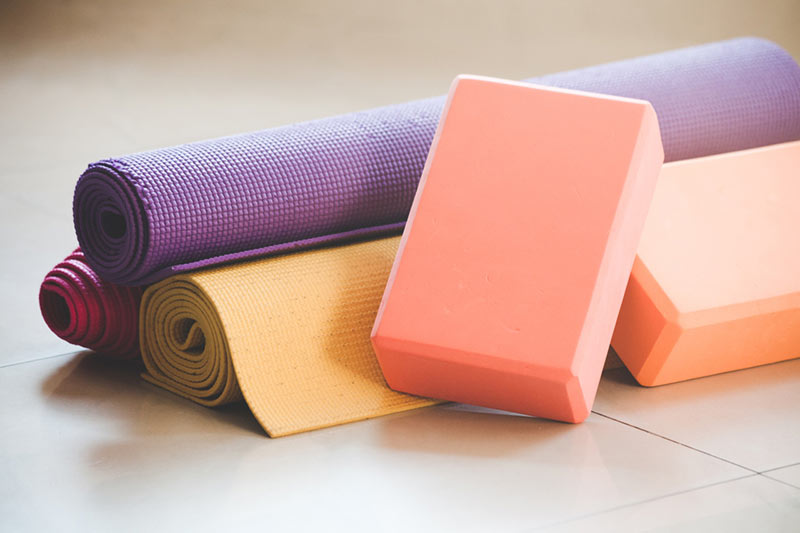FAQs

What are the benefits of yoga with Julie?
Most of my classes are located in my small home studio, which gives an intimate and comfortable feel to the class. Because the classes are small, there is plenty of opportunity for individual attention and assistance, based on a student’s needs and interests.
With the small classes, the systematized method, and student-teacher commitment, students develop relaxation, knowledge, flexibility and strength in a perceptible, steady and safe progression. And build community along the way!
My background as a Massage Therapist also gives me a strong foundation in anatomy, body mechanics and safety, and experience with many different types of physical limitations and concerns.
What can I expect in a TriYoga class?
Classes generally begin in a seated posture, focusing on a relaxed body and rhythmical breath. Flowing movements and sustained postures are then added, based on students’ knowledge and the level of the class. Through the practice, the breath becomes more rhythmical, the mind focused and calm, the body relaxed.
My intention is to provide a safe and supportive environment in which every student feels comfortable. Blankets, pillows, blocks and other props are used for deeper relaxation, ease and optimal alignment. Classes conclude with deep relaxation, breathing techniques and meditation, again depending on students’ knowledge and level of class.
I’m not flexible – can I do yoga?
Practicing yoga is not about flexibility, although flexibility will steadily increase! Most everyone can practice yoga, beginning right where they are now. Modifications can be given and props (pillows, blankets, blocks) are used to accommodate individual bodies and needs.
What should I wear?
Yoga is most easily practiced in comfortable clothing that allows the body to bend and breathe deeply. Clothing should allow freedom of movement without being overly loose or baggy.
What should I bring?
Mats, blocks, blankets and other props are provided, though you are always welcome to bring your own!
If you are joining us on Zoom and do not have a mat or props, you can begin with what you have at home.
- Instead of a yoga mat, you can use a towel or blanket or any kind of exercise mat.
- In place of a yoga strap, you can use a bathrobe tie or anything similar.
- If you do not have yoga blocks, please have several small firm pillows ready. You will also use these pillows (or a folded blanket) in seated postures.
- You might like a blanket during Deep Relaxation at the end of class.
- And whenever you are ready to buy your own yoga props, I am happy to make recommendations!
If I want to bring my own, what mat do you recommend?
When you are first beginning, any mat is fine! When you are ready to commit to your yoga practice, the guide published in September of 2019 by Consumer Advocates is a great resource. They have done extensive research on a variety of mats that are eco-friendly and non-toxic, with an interest also in functionality and value.
What are the benefits of private sessions?
Private sessions are specifically tailored to your needs and abilities. It can be an opportunity for more individualized attention and pacing, to receive more hands-on assists, or to work with specific conditions, injuries and challenges. Or to work with individual areas of interests, such as our many breathing practices and meditation! Results can include a deeper practice and greater focus, and can supplement the class experience or stand alone.
How is TriYoga different from other types of yoga?
TriYoga is similar to other yoga styles in that it includes physical postures, breathing techniques, and practices to encourage concentration and meditation.
TriYoga is unique due to its systematic sequencing. This allows students to learn simple foundational postures and flows first, and to progress as knowledge increases. Strength, flexibility, endurance, and balance are gained over time. This allows the practice to be as gentle or as challenging as the student desires.
TriYoga is also unique due to its wavelike spinal movements, the union of posture, breath and focus, the emphasis on economy of motion, natural alignment of the spine, and rhythmic pacing.
For more information on TriYoga, see TriYoga.
Who is Yogini Kaliji (Kali Ray)?
Kaliji is the founder of TriYoga. Her life is devoted to sharing the ageless and universal teachings of yoga. Traveling extensively, she has taught TriYoga on a daily basis for over 40 years. Integrating Eastern thought and Western tradition, she has presented 50 keynote addresses at yoga conferences and other venues worldwide, and has been featured in yoga magazines and other media.
Kaliji’s presence, her mastery of the flow and the ageless wisdom inherent in TriYoga have inspired and transformed the lives of countless people throughout the world.